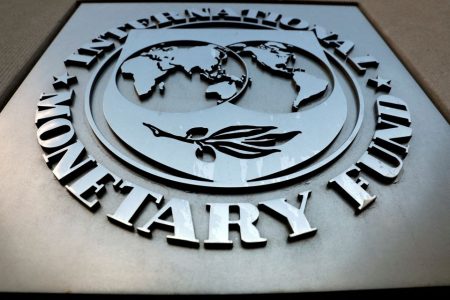
- The country that faces the highest risk if the dollar falls is Mexico, as it depends more than any other country on trade with the U.S.
- South Korea is among the most vulnerable to a decline in the dollar, with the largest share of its national debt owed in U.S. dollars in the study.
- While some countries are heavily tied to U.S. trade, others are more financially linked through dollar-based debt, and a few are caught in both categories.
The U.S. dollar is starting to weaken, and more people are paying attention. This comes as the Federal Reserve talks about cutting interest rates, U.S. debt keeps growing, and fewer countries seem interested in holding dollars in reserve.
A recent study by The Forex Complex ranked countries based on their exposure to this potential decline. The analysis evaluates four key factors: the share of each country’s imports and exports involving the U.S., the portion of its debt denominated in dollars, and how closely its currency has tracked the dollar between 2020 and 2025. These indicators were combined to create a composite score for each country, highlighting those most at risk.
| Country | Pegged to US ratio | Dollar-denominated debt as a % of GDP | % of US imports out of total imports | % of US exports out of total exports | Composite Score |
| Mexico | 19.540 | 24.40% | 49.32% | 70.67% | 98.99 |
| South Korea | 1.310 | 134.60% | 9.68% | 3.28% | 94.74 |
| Indonesia | 16,853.950 | 15.30% | 4.30% | 12.39% | 90.95 |
| Colombia | 4,217.560 | 29.70% | 24.60% | 28.40% | 73.75 |
| Hong Kong | 7.760 | 110.50% | 4.17% | 0.73% | 72.37 |
| Argentina | 1,168.780 | 60.40% | 12.04% | 8.79% | 57.29 |
| Peru | 3.670 | 38.90% | 18.62% | 12.64% | 46.96 |
| South Africa | 1,443.540 | 31.90% | 8.88% | 14.47% | 39.96 |
| Chile | 935.750 | 16.20% | 16.63% | 16.10% | 36.24 |
| Malaysia | 4.360 | 28.70% | 9.39% | 18.85% | 34.42 |
*For the full research, please refer to this sheet.
Mexico ranks first with a score of 98.99, showing the highest exposure to a falling U.S. dollar. Nearly half of its imports come from the U.S., and over 70% of its exports go there, the highest on the list. Its debt in U.S. dollars is lower than some other countries with 24.40% of GDP, but the strong trade reliance makes its economy especially sensitive to dollar shifts.
South Korea comes second with a score of 94.74. Unlike Mexico, its trade with the U.S. is small, with only 9.68% of imports and 3.28% of exports. But its risk comes from debt: 134.60% of its GDP is owed in U.S. dollars, the highest in the study. This shows how financial exposure alone can create major vulnerability.
Indonesia places third with a score of 90.95 among the countries most vulnerable to a dollar decline. Its currency has long been pegged to the dollar, which limits flexibility. While it doesn’t depend heavily on U.S. trade or borrowing, the fixed exchange rate, along with a significant amount of dollar debt, still puts it at risk.
Colombia scores 73.75 and ranks fourth. It has a mix of risks, with stronger U.S. trade ties than Indonesia and about 30% of its debt in dollars. That makes it vulnerable on both the trade and financial fronts.
Hong Kong follows closely with a score of 72.37. It barely trades with the U.S., but over 110% of its economy is tied to debt in U.S. dollars. Like South Korea, its main risk comes from finances, not trade.
Argentina ranks sixth with a score of 57.29, mainly due to its high level of debt in U.S. dollars, at about 60%, one of the highest in the study. Its trade with the U.S. is relatively low, but the large debt burden still puts it at significant risk if the dollar weakens.
Peru’s score of 46.96 puts it in the middle of the pack. About 38.90% of its GDP is dollar-linked debt, with U.S. trade making up 18.62% of imports and 12.64% of exports. While lower than Argentina’s debt, Peru’s broader trade ties to the U.S. add to its risk profile.
South Africa scores 39.96, ranking eighth. Its U.S. trade exposure is limited, with 8.88% of imports and 14.47% of exports. While it doesn’t rely much on U.S. trade, about a third of its economy is in dollar debt, similar to Peru.
Chile follows with a score of 36.24, with its exposure to loss in case the dollar falls. It has a balanced trade share with the U.S., with 16.63% of imports and 16.10% of exports, but relatively low dollar debt at 16.20% of GDP, making it less vulnerable than others.
Malaysia rounds out the top ten with a score of 34.42. It sends just under 19% of its exports to the U.S. and gets around 9% of its imports from there. Around 29% of its debt is in U.S. dollars, a combination that keeps it on the list, even if the risks are lower than others ranked higher.
A spokesperson from The Forex Complex, “Global reliance on the U.S. dollar is deep but uneven. Some economies are tied through trade, others through financial systems like debt or currency regimes. What makes the risk significant isn’t just the connection itself—it’s how concentrated that connection is. When large portions of an economy lean on a single foreign currency, even small shifts in its value can trigger wide-ranging effects.”



